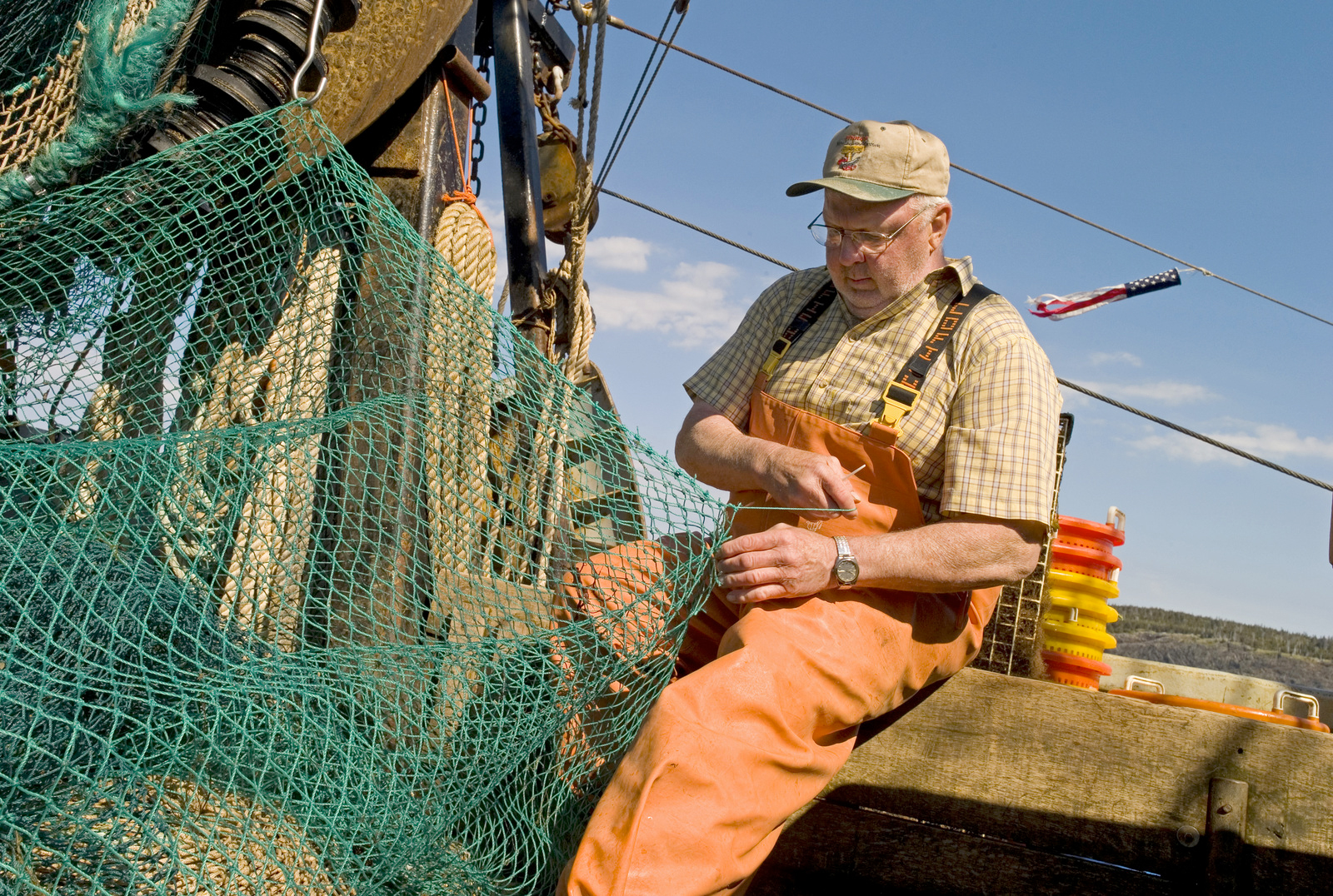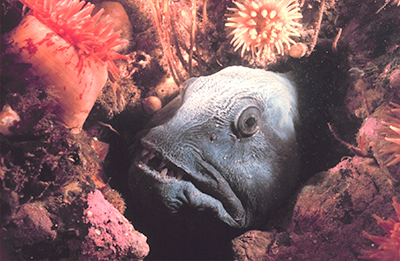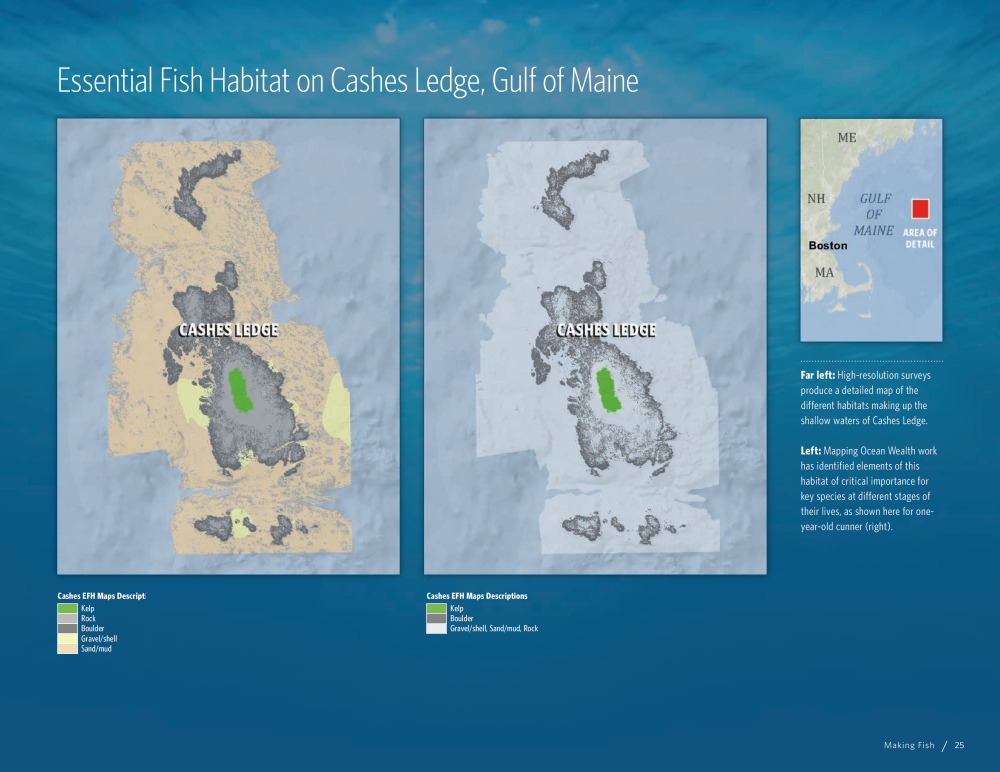
Ecosystems: Offshore, Hard-Bottom Habitat
Ecosystem Services: Fisheries
Projects and Places: Cashes Ledge

Imagine sitting on a boat 80 miles off the coast of Massachusetts, no land in sight. As you float over underwater landscapessculpted by a retreating glacier during the last ice age, sunlight penetrates the water, giving life to a lush kelp forest and one of the world’s deepest seaweed communities. The ragged slopes, and deep muddy, rocky plateaus, combined with the unique oceanographic conditions created by the underwater mountain range, mean that the offshore banks of the Gulf of Maine are prime habitats for marine life in the Northwest Atlantic Ocean.
Projects and Places
Photo Credits in Text: © Bridget Besaw, © NOAA


